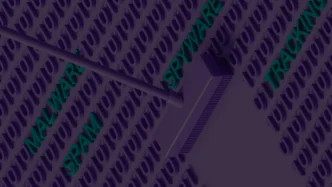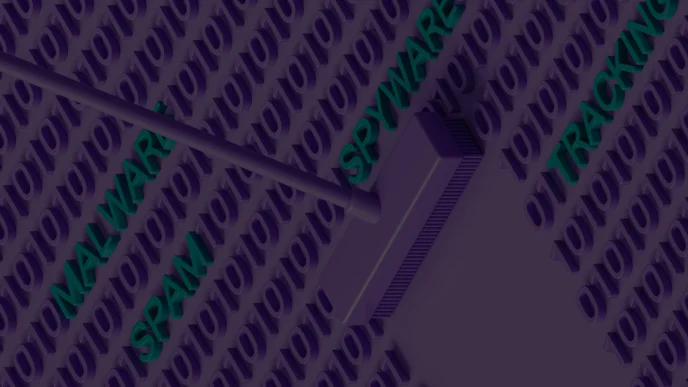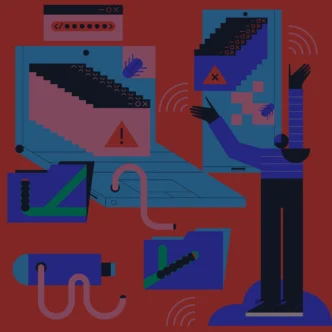Data scraping, the automated extraction of information from websites and digital platforms, has emerged as a significant factor in modern cybersecurity strategies. While organizations use data scraping for legitimate purposes such as market research, competitive analysis, and cybersecurity intelligence, malicious actors also leverage scraping techniques for cybercrime, fraud, and data breaches. This article explores both the ethical and unethical applications of data scraping, the associated risks, and the latest tools and strategies for defense against malicious scraping.
Legitimate Applications of Data Scraping
Data scraping serves as a valuable tool for various ethical and legal purposes across industries:
1. Market Research and Business Intelligence
- Organizations collect pricing, product details, and customer reviews from competitor websites to refine their pricing and marketing strategies.
- Investors use scraped data to analyze financial trends and stock market fluctuations.
2. Content Aggregation and Journalism
- News aggregators compile information from multiple sources to provide comprehensive coverage.
- Researchers gather large datasets from public domains to analyze trends in social sciences, economics, and healthcare.
3. Cybersecurity Intelligence
- Security firms scrape threat intelligence feeds, forums, and the dark web to identify emerging cyber threats, leaked credentials, and vulnerabilities.
- Organizations monitor mentions of their brands across the internet to detect impersonation and phishing attempts.
While these applications demonstrate how data scraping can be used ethically, it is also a powerful tool for malicious actors, leading to significant cybersecurity threats.
Malicious Data Scraping and Cybersecurity Threats
Despite its legitimate applications, data scraping is frequently exploited for unethical and illegal purposes, leading to a range of cybersecurity risks:
1. Intellectual Property and Content Theft
- Automated bots extract proprietary content such as articles, images, and software code, violating intellectual property rights.
- Unethical competitors scrape product catalogs to undercut pricing and disrupt markets.
2. Large-Scale Data Breaches
- Malicious scrapers harvest personal information from social media profiles, e-commerce platforms, and job portals.
- Stolen data is often sold on the dark web or used for targeted phishing attacks.
- The 2023 MOVEit data breach exposed sensitive information of thousands of organizations due to vulnerabilities in file transfer software.
3. Automated Account Takeovers and Fraud
- Credential stuffing attacks use scraped login data to gain unauthorized access to user accounts.
- Scraped email lists are used in phishing and social engineering campaigns.
4. Infrastructure and Performance Issues
- Aggressive scraping can overwhelm servers, leading to degraded website performance or even denial-of-service (DoS) conditions.
Given the rising threat posed by malicious data scraping, organizations must deploy robust defenses to safeguard their digital assets.
Tools Used for Offensive and Defensive Data Scraping
Both ethical researchers and cybercriminals use specialized tools for data scraping. Below are the most commonly used tools:
Offensive Data Scraping Tools (Used by Malicious Actors)
- Scrapy – An open-source Python framework for web crawling, often exploited for unauthorized data extraction.
- OutWit Hub – A data scraping application that allows users to extract information from websites without coding knowledge.
- Diffbot – A powerful machine learning tool designed for content extraction, which can be misused for large-scale scraping.
- BeautifulSoup & Selenium – Python libraries often used in combination for bypassing bot detection mechanisms and scraping dynamic websites.
Defensive Measures and Anti-Scraping Tools
- Web Application Firewalls (WAFs) – Solutions such as AWS WAF and Cloudflare’s Bot Management detect and block automated scraping bots.
- Bot Management Solutions – AI-powered tools like DataDome and PerimeterX analyze web traffic and block unauthorized scraping attempts.
- Rate Limiting & CAPTCHA – Implementing rate limiting and CAPTCHA challenges reduces automated scraping while allowing human users.
- Robots.txt & API Restrictions – Properly configured robots.txt files and API access controls help regulate how search engines and third parties access data.
- Content Threat Removal (CTR) – This approach assumes all incoming data is potentially malicious and extracts only the necessary business information.
Ethical Considerations and Legal Frameworks
To balance security and innovation, organizations must ensure that their data scraping practices comply with ethical standards and legal regulations:
- Adherence to Data Protection Laws – Laws such as the General Data Protection Regulation (GDPR) and the California Consumer Privacy Act (CCPA) impose restrictions on data collection and mandate user consent.
- Respecting Website Terms of Service – Many websites explicitly prohibit scraping in their terms of service agreements.
- Proper Use of Robots.txt Files – While robots.txt files are not legally binding, ethical scrapers should adhere to the directives specified by website owners.
- Transparency and Responsible Disclosure – Organizations conducting scraping for research or security purposes should disclose their activities and seek permission where applicable.
Future Trends in Data Scraping and Cybersecurity
The landscape of data scraping and cybersecurity is rapidly evolving, with advancements in both offensive techniques and defensive strategies:
- AI-Powered Scraping – Machine learning enables more sophisticated scraping techniques that can bypass traditional security measures.
- Zero-Trust Security Models – Organizations are shifting towards a zero-trust approach, where all traffic, including web interactions, is continuously verified.
- Automated Threat Intelligence Gathering – Security firms are increasingly leveraging data scraping to detect cyber threats before they escalate.
- Regulatory Crackdowns on Malicious Scraping – Governments and tech companies are imposing stricter regulations to protect online data from unauthorized extraction.
Conclusion
Data scraping is a double-edged sword in modern cybersecurity strategies. When employed ethically, it serves as a powerful tool for business intelligence, market research, and security threat detection. However, malicious actors exploit data scraping for cybercrime, data breaches, and fraud. By implementing robust security measures and adhering to ethical guidelines, organizations can harness the benefits of data scraping while protecting their digital assets against threats.
As technology continues to evolve, staying ahead of both offensive and defensive scraping techniques will be crucial in safeguarding data and maintaining cybersecurity resilience.














